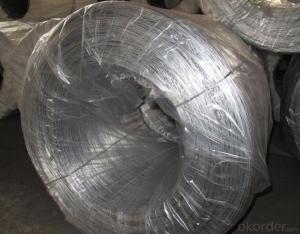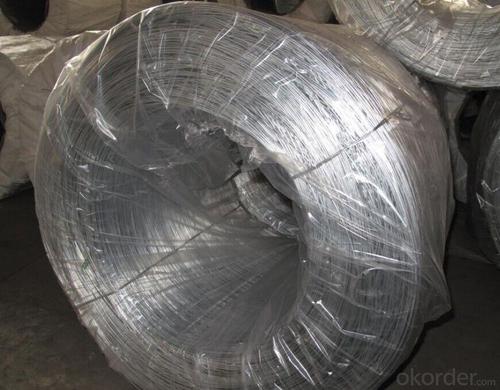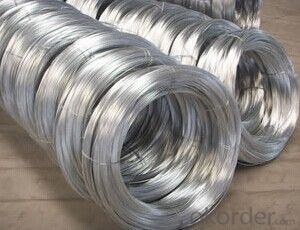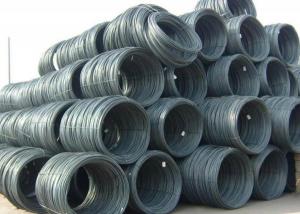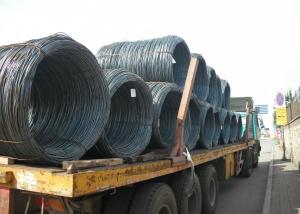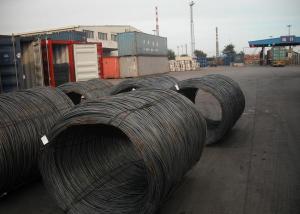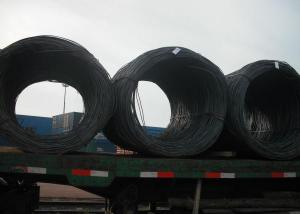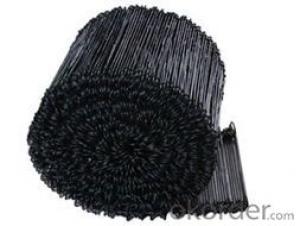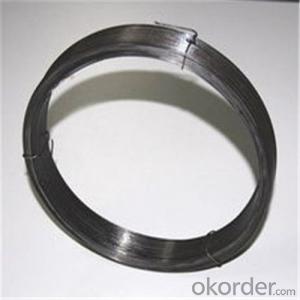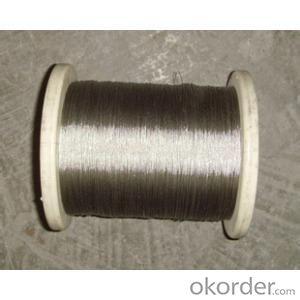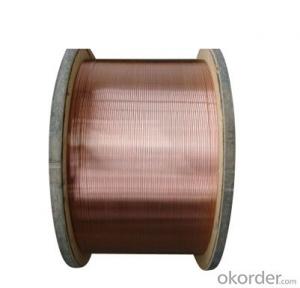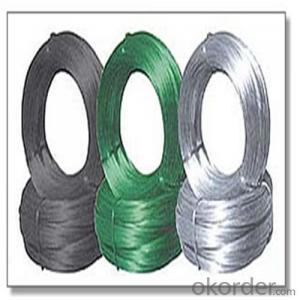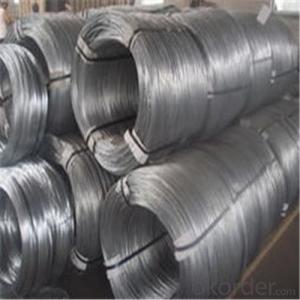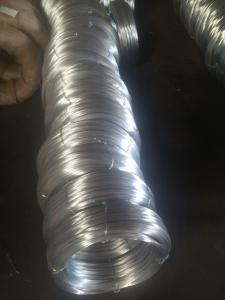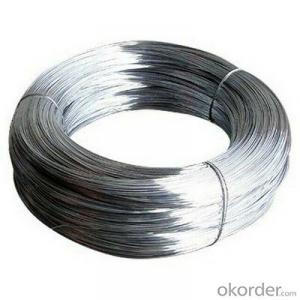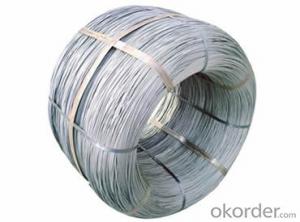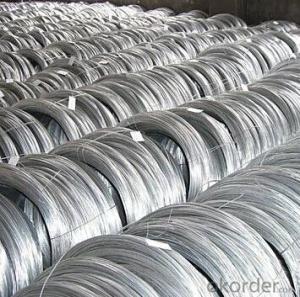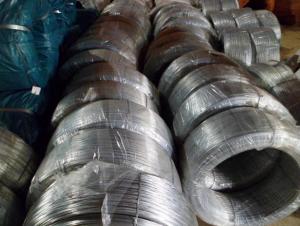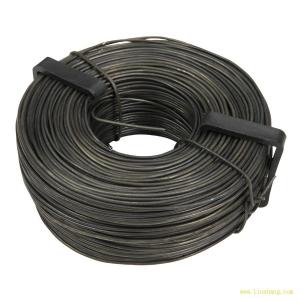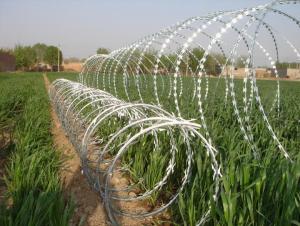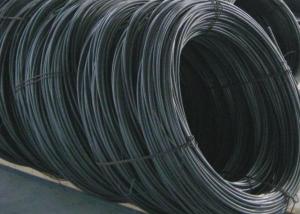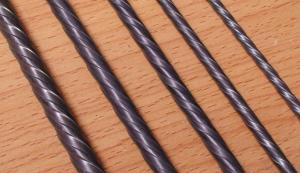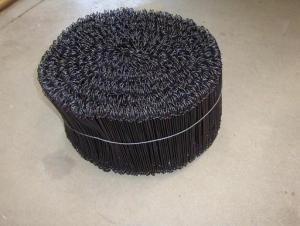Galvanized Hanger Iron Wire Hot Sale Low Price
- Loading Port:
- Tianjin
- Payment Terms:
- TT OR LC
- Min Order Qty:
- 5 m.t.
- Supply Capability:
- 10000 m.t./month
OKorder Service Pledge
OKorder Financial Service
You Might Also Like
Specification
Galvanized wire
Electric Galvanized Iron Wire Technical Information:
Processing with low carbon steel wire, through drawing and electric galvanizing
Standard wire gauge for electro galvanized iron wire: From 8# to 16#
Electric galvanized iron wire uses:
Electric galvanized wire is used in weaving of wire mesh, fencing for expressway and construction.
Hot-DIP Galvanized Iron Wire Technical Information: Material: Super carbon steel Processing by drawing, hot-DIP zinc coating
Hot-DIP galvanized iron wire standard wire gauge: From 8# to 24#
Hot-DIP galvanized wire property: Thick zinc-coating layer of hot-dipped galvanized iron wire offers super corrosion resistance with firm coating layer. Custom size available.
Specification of iron galvanized wire
| Serial Number | SIZE | Diameter(mm) | Standard Bundle Weight (Kg) |
| 1 | 8# | 4.0 | 50 |
| 2 | 10# | 3.5 | 50 |
| 3 | 12# | 2.8 | 50 |
| 4 | 14# | 2.2 | 50 |
| 5 | 16# | 1.6 | 50.25 |
| 6 | 18# | 1.2 | 25 |
| 7 | 20# | 0.9 | 25 |
| 8 | 22# | 0.7 | 10-25 |
Application of iron galvanized wire
Construction Wire Mesh, Protecting Mesh, Fence Mesh, Decorative Mesh, Screen, Gabion Mesh, Window Curtain, Barbecue Wire Mesh, Filter
Galvanized wire machine
plastic film packaging 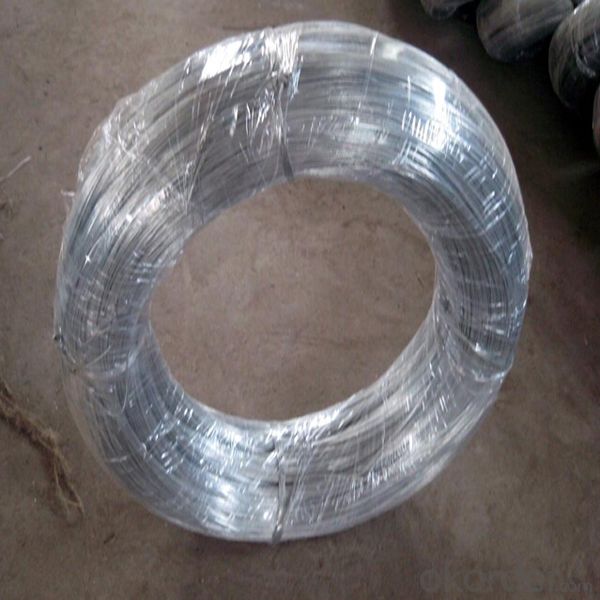
plastic inside, hemp outside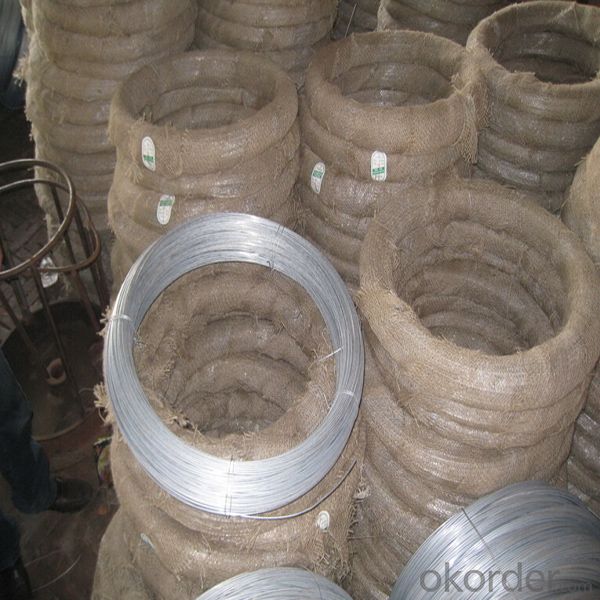
- Q: A thin wire connected to a light bulb will have the bulb shine dimmer than a thicker wire. What is the scientific reasoning for this?
- Thin wires are usually used to make heat because there is more resistance going through a thin wire. In an incandesent bulb 60% OF THE OUTPUT IS HEAT. If thee is thicker wire, more electrons go through and the light can be brighter.
- Q: Has anyone tried to use or experiment to use CAT5E wire on a speaker going to Home theater receiver? If none, can you suggest a good speaker wire to use on a speaker.Paradigm Monitor Series and Onkyo TX-SR606 (Speaker and Receiver)
- In my opinion, stranded individual wires degrade the sound, while thin flat copper foil gives the best sonic result. The difference is truly amazing.
- Q: I dont understand it I am trying to get a 1ohm load on a 2ohm dvc speaker but cant figure out how to tell if the wire you connect in the postive terminal on the sub in a neg wire or positive how do you tell what the gray line is on this diagram positive or negetive and how to tell. thanks
- this is what you will desire to do. merely connect the beneficial to beneficial terminals on the subs themselves and the negatives to negatives mutually besides. you will % 4 man or woman wires for that when which connect the subs as much as the container with one portion of the terminals to the beneficial and unfavourable wires and do the resembling the different sub. Then connect the two one among them to the comparable terminal on the amp and that's a a million ohm load.
- Q: I want to know what the definition is of a hot wire gauge.
- I would need to hear this term used in context. It could mean the gauge of the 'hot' wire which would refer to the size of the wire being used to conduct the positive ('hot') flow of electricity.
- Q: Is there really a difference between audio wire and regular house wire? If you say yes then please explain, in understandable scientific terms why, or point me to a site that can.
- yes. even bigger difference when you used it to wire the battry to the amp. The solid-copper house wire are design for high voltage and lov current. But, your car voltage is low, only 12 volts. Now see if you have a big amp and use 1000 watts. and calculate with the Power formula : P = V x I P stands for Power, V stands for Voltage, and I stands for Current. The currents you use in 12 volts equals 83.333 ampere. its a big current. now if you use the home voltage(220 volts) the currents equal 4.545 ampere. See the different? 83 ampere and 4 ampere. that is why the wire for car amp/subwoofer usually not use solid copper, but use hairsize copper. Of course not a single hairsize copper, but alot of it. I have a car with audio system. I use 1 swiss audio power amp 2000 watts and 2 poweramper 1500 rms Sub. and to wire the battery and the amp, I used a thumb size cable - hairsize copper.
- Q: From my ceiling fan I have the following wires: green, white, blue and blackFrom my ceiling I have a bunch of wire in each of these colours: brown, red and orange.Which wires do I connect with each other??
- These are all probably hot-side wires. If you have the knowledge and the tools, find out which wire or wires is/are hot in the box with the switch off. If you have no idea what I am talking about, you REALLY need to find someone who knows electricity. BTW, the wires in the fan are quite simple to decode. The green wire is the ground and attaches to either the box or a ground wire in the box. The white wire is the neutral and attaches to the white wires in the box. The black is the hot lead for the fan and the blue is the hot lead for the light. These two can be combined if you have only one wall switch. Where they attach in the box will be determined by which hot lead is switched. I can probably guess how the box and switch are wired but I may be wrong and that would be dangerous. Call an electrician so you don't burn your house down.
- Q: i bought a programmable thermostat, and the wiring i see doesn't make any sense. it's for central air, heating and cooling. there are no tags or labels on the wires, and it was probably installed in the seventies.there are four wires coming out of the wall, and they're screwed into four of six slots:Y = blue wireG = red wireW = green wireR = white wireB = emptyO = emptythe new thermostat has the following slots: G, Rc, Rh, Y/O, W/B, Y1. how should the old labels correspond to the new ones?
- Here is the schematic you will need. First off I will explain what each terminal is for. Y is for cooling. G is for fan operation. W is for heating operation. R is for your 24 volt transformer. A typical wiring color is as follows. R= red wire. G= green wire. Y=yellow. W=white. B and O are for a heat pump. Do not use them. Now what you will have to do is make sure the wires at the furnace are set the way described above. Make sure if you have to switch wires around on the furnace that the power is off. You WILL blow the low voltage fuse on the control board. If your furnace has a C terminal that is the COMMON That is used to power your thermostat. (so you don't have to use batteries). You will need a 5th wire for that. For the life of me I cant figure out why they did not put the proper color wires on the right terminals. It's a supper easy thing to change. Just remember to turn off the power before removing any wires. If you use this diagram, then it will be simple for anyone else to work on the system . I hope this helps. If you need any further information feel free to let me know and I will do my best to answer your questions. Good luck.
- Q: Hello everyone! I have what is probably a very simple question.I'm not exactly a radio expert. So my question is this:Is there a difference between copper wire and antenna wire (copper as well)?
- Since high frequency electromagnetic waves travel at or near the surface of the wire, then the wire has no need to be solid copper, as there won't be any current flowing through the center anyway. Thus most antennas are hollow (to reduce weight). As the first responder said, sometimes antenna wire is formed from copper wire strands wrapped around a steel core. Steel is a relatively poor conductor, but since most or all of the current flows through the outside, this doesn't matter. The steel center provides strength, as steel is stronger than copper, and it is usually less expensive. But you can just use pure copper wire also; it shouldn't matter for most applications. If using a two conductor wire -- one ground and one for the signal in the same cable -- then keep in mind that a twisted pair is more resistant to outside noise:
- Q: Two steel wires are stretched with the same tension. The first wire has a diameter of 6.00E-4 m and the second wire has a diameter of 8.90E-4 m. If the speed of waves traveling along the first wire is 53.2 m/s, what is the speed of waves traveling along the second wire?
- Wave velocity v = √(T/μ) Same tension in both wires: T1 = T2 μ is the linear mass density v1 = 53.2 m/s v2 = ? = v1/v2 = √(T1/μ1) / √(T2/μ2) = √(T1μ2 / T2μ1) = √(T1/T2 * μ2/μ1) = √(μ2/μ1) Linear mass density is mass/length, mass is density*volume: m/L = ρV/L = ρAL/L = ρA = ρπr^2 Both wires are steel so their density is the same. == v1/v2 = √(μ2/μ1) = √(ρπr2^2 / ρπr1^2) = √(r2^2 / r1^2) = r2/r1 == v2 = v1r1/r2 = (53.2*3.00×10^-4) / 4.45×10^-4 = 35.9 m/s ---- Speed of waves along the second wire is 35.9 m/s
- Q: Are toast - previous owner did a bad amp install on them and there is basically no wire left to use for mine.Is it possible to run a radio power wire/remote wire from the fuse panel back to the radio? If so can i just shove the wire in the fuse holder then stick the fuse back in on top of it?((Fuse 8 is the mustangs radio fuse))
- Never wire anything into your fuse box, that will defeat the purpose of having it. You will have to do what's called a hard wire. You will need to run all new wires, which is the safest way to do it, with all proper fusing. A constant +12, a switched +12 and a ground is all you need for the radio to work, and all new speaker wires. If you can find one in a junkyard, you might be able to find a new harness to repair the OEM one, and that would really help you out. Good luck!
Send your message to us
Galvanized Hanger Iron Wire Hot Sale Low Price
- Loading Port:
- Tianjin
- Payment Terms:
- TT OR LC
- Min Order Qty:
- 5 m.t.
- Supply Capability:
- 10000 m.t./month
OKorder Service Pledge
OKorder Financial Service
Similar products
Hot products
Hot Searches
Related keywords
